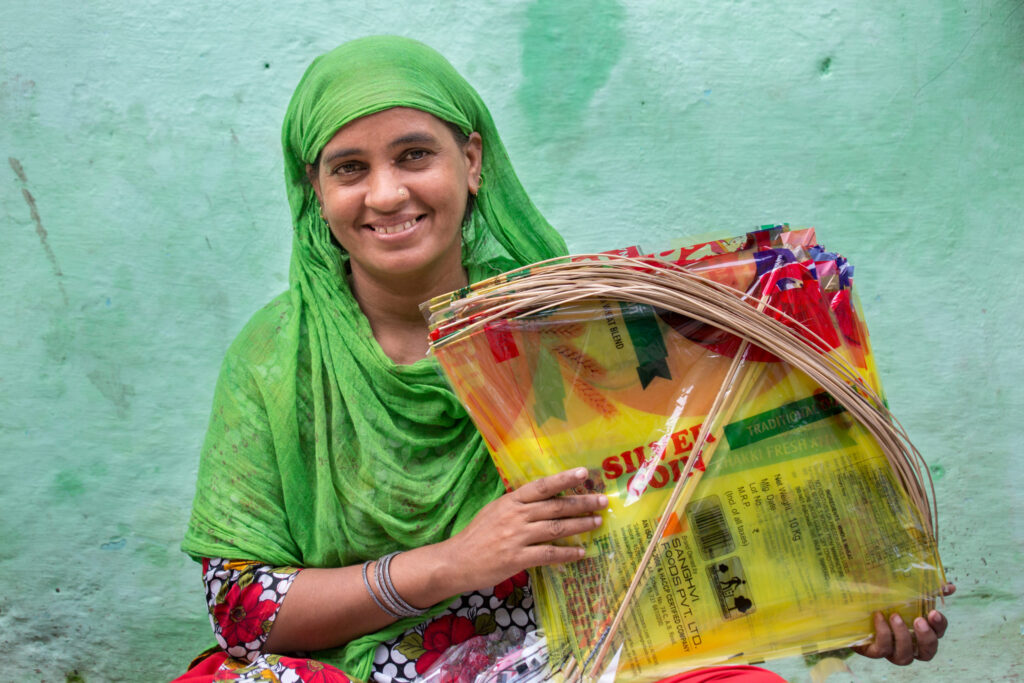Understanding PHE Terminology and Fundamentals: Insights from Practice

The past few years have seen an influx of attention and action at the intersection of climate change, environment, and population health. This practice area goes by several names. Here, I’m using the term, “population, health, and environment (PHE)”, which dates to the 1980s when the conservation sector began advocating for integrated programming to achieve both biodiversity and human health goals.
After decades of working in family planning (FP) and sexual and reproductive health and rights (SRHR), I’m thrilled to be learning more about the climate change and environment part of the PHE approach. It makes so much sense because environmental health and the health of women — particularly women’s ability to decide if, when, and how many children to have — are cornerstones of economic revitalization and sustainable development. Despite my enthusiasm for PHE, early in my learning journey I found myself swimming in a sea of new terminology and worried I was saying the wrong thing. I’m still learning, but I’ve absorbed a few things about the lingo and some of the big themes in the PHE practice area. I’m sharing those here hoping it helps others understand the terminology and a few key nuances about PHE.
PHE – Population, health, and environment is an integrated community-based approach that recognizes and addresses the complex relationships between people’s health and the environment. This multi-sectoral approach strives to improve voluntary family planning and reproductive health care, and conservation and natural resource management within the communities living in ecologically rich areas of the globe, which often have limited access to health care, including family planning. – People Planet Connection
Why is PHE important?
The health of the planet underpins the well-being of all life, including humanity. Ultimately, all 17 Sustainable Development Goals depend on a healthy environment. Our most vulnerable countries and populations are disproportionally affected by environmental degradation; women and children suffer greater economic and health burdens.
Deciding whether, when, and how often to bring children into the world is the foundation of human development. Access to voluntary family planning enables this human right. Family planning remains — and arguably will always be — one of the best bangs for the buck in development. It improves the health and well-being of women and children, alleviates poverty, and dramatically expands opportunity.
While single-sector programs have their place and are the most effective intervention in some situations (e.g., smallpox eradication), the political, funding, and scientific communities continue to move to holistic, multi-sector approaches to development interventions. Integrated development (also known as multi-sector, cross-sector, or multidisciplinary development) is the future.
The focus on the convergence of women’s health and planetary health continues to increase. Here are a few current examples of diverse fields advancing integrated approaches:
- For the first time, the 2025 International Conference on Family Planning will have a conference track devoted to climate change and environment to promote the reciprocity between population dynamics and environmental well-being.
- The UK government announced that £16million of their International Climate Finance will be earmarked to support reproductive choice as part of climate resilience building.
- Currently, a consortium led by the World Health Organization’s Human Reproductive Programme, the African Institute for Development Policy, and the IBP Network, is undertaking a systematic consultation with global partners to identify research and program priorities at the intersection of climate change and sexual and reproductive health and rights. Findings forthcoming.
- The Biodiversity and Family Planning Task Force of the International Union for Conservation of Nature just published guidance for revising countries’ National Biodiversity Strategies and Action Plans to remove barriers to voluntary family planning and include PHE in the revised plans.
- The 28th Conference of Parties (COP 28) to the United Nations Framework Convention of Climate Change held its first ever Health Day, putting human health at the forefront for climate action and unveiling the Climate and Health Declaration endorsed by 123 countries.
- Women Deliver packaged climate insights from the 2023 conference into an Advocacy Guide to use before, during, and after COP 28.
PHE Tips and Takeaways
At the risk of emphasizing what PHE is not, I’ve found that it is necessary sometimes. PHE is not about blaming the current climate crisis on low- and middle-income countries (LMICs), regions with high population growth, or people with larger families. PHE is not about focusing climate change solutions on LMICs exclusively. It is well known that overconsumption by wealthy countries is the leading cause of climate change. And PHE is NOT about promoting population control or coercive family planning programming or policies. This may need to be said loudly and repeatedly. Population dynamics are vital demographic indicators for climate adaptation measures, and development and humanitarian communities must continue to talk about population numbers while debunking alarmist narratives around overpopulation.
This topic has passionate champions who know and care more about one sector than the other. Some of us come to the topic from the climate change or environment perspective and some from the human health or women’s health “side.” The health and environment sectors have separate funding, normative bodies, objectives and frameworks, and language. Development’s current siloed nature can reveal divisiveness and competition. One of the biggest reoccurring questions that I hear is: How can funders organize their structures to support health and environment initiatives simultaneously? Ultimately, a willingness to step outside of comfort zones and embrace other sectors is key to driving combined agendas forward.
Communicating effectively between sectors may mean using multiple abbreviations and terms in the same sentence. I often default to saying “PHE/PED” to cover my bases. As a die-hard family planning champion, it’s important to ensure that the “P” for population is included in my terminology. That said, I’m learning the importance of suspending FP as a focal point in the interest of making progress in health more broadly or in adjacent areas such as maternal and child health and gender, all of which can include FP.
Don’t get too hung up on the terminology. Yes, it’s important to know the terms and to use the best terminology for the conversation at hand. But the bigger point is integration. Regardless of whether it’s PHE, PED, PHED, or planetary health, the core of the practice is about integrating work between two or more sectors. The thrust of the effort at any nexus is merging work streams. Achieving better outcomes simultaneously in the health and environment sectors requires creating more inclusive pathways, incentives, and frameworks to drive integrated work. Conceptually and operationally, that is complex work, but the development and humanitarian communities have done this before (nutrition across sectors is a known success). I’m learning it’s essential to be flexible and forgiving with the terminology, check for comprehension, and embrace the beginner mindset in everyone.
At the core of integration are people from different sectors deliberately coordinating their work toward complementary goals, and at the core of deliberately coordinating is a willingness and openness to make connections and learn from each other.
I’d love to know what you think:
- What tips do you have for navigating cross-sector nomenclature?
- What advice do you have for building a better world through integrating family planning with climate change and environment initiatives?
To learn more about the nexus of family planning and environment, check out these resources:
- Climate Change and SRHR Framework — a first-of-its-kind strategic framework on how funders can assess, anticipate, and respond to the gendered impacts of climate change on SRHR investments.
- Population, Environment, and Development Integration Fact Sheet — covers approaches, history of USAID support, strategic objectives, and cross-sectoral benefits.
- People-Planet Connection — an online space dedicated to the PED/PHE community to collaborate and exchange knowledge, resources, and experiences.
- Removing Barriers to Family Planning, Empowering Sustainable Environmental Conservation: A Background Paper and Call for Action — offers recommendations for conservation organizations to embrace family planning as one response to development challenges.
- Sexual and Reproductive Health and Rights and Climate Justice Messaging Guidance — supports communication and linkages between the sectors.
Love this article and want to bookmark it for easy access later?




